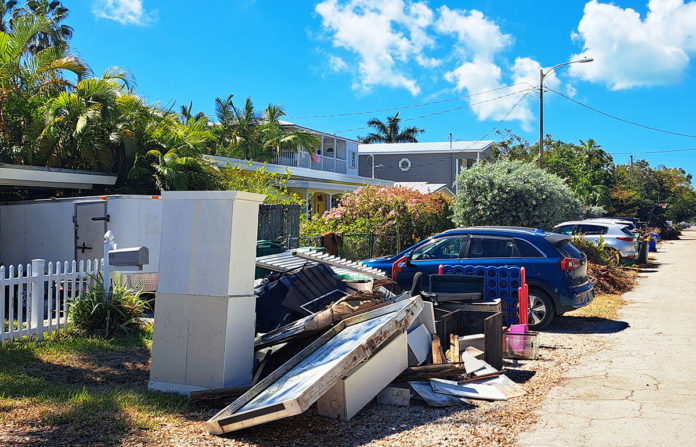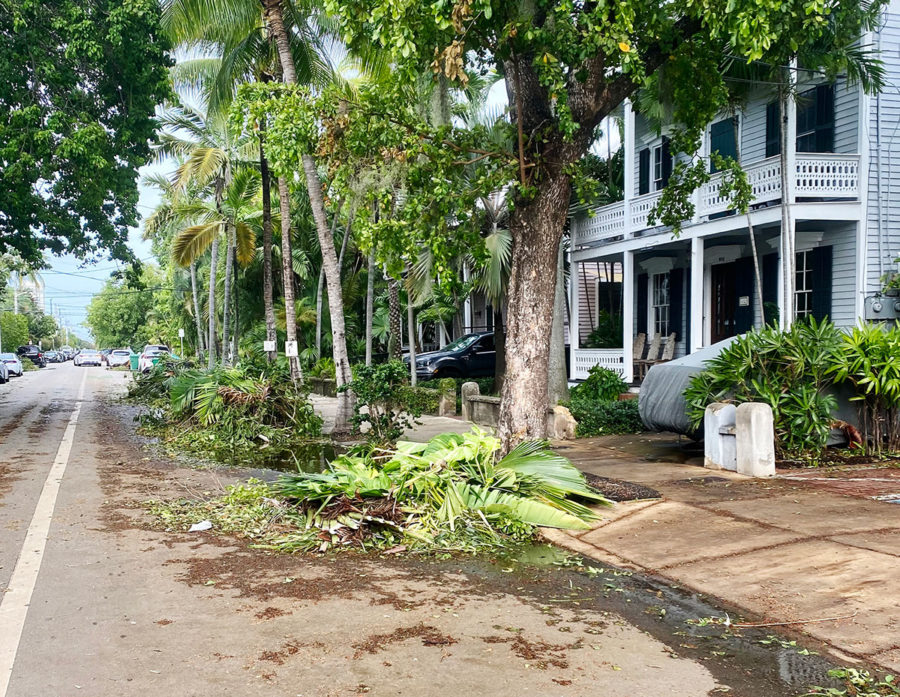
By Amy Patton
When Hurricane Ian barreled northward from Cuba toward South Florida in late September, residents of and visitors to the Florida Keys were braced for impact.
So too, was the city of Key West.
On Sept. 27, when Ian was just hours away, President Joe Biden approved Florida Gov. Ron DeSantis’ request for a federal emergency declaration. That statement unlocked the flow of funding from the Federal Emergency Management Agency (FEMA), which comes to the aid of cities and states severely affected by natural disasters.
With the island facing cleanup efforts resulting from storm surge flooding, high winds and downed trees, the response was handled in a “well-organized” and “very efficient manner,” Key West Mayor Teri Johnston told the Keys Weekly last week.
The local government followed a rubric well-familiar to most who live here: After the damage assessment comes the cleanup.
Hurricane Irma, the September 2017 storm that hit hard in the Keys, cost the island of Key West $5 million for its response.
At this point, said Key West’s Assistant City Manager Todd Stoughton, the projected cost of Ian’s wrath will be $4 million for debris removal, flood mitigation, road and bridge repair and sand encroachment on public roads. “That estimate is based on the experience we had with Hurricane Irma,” Stoughton said.
Irma’s most devastating impacts were in the Lower and Middle Keys, while Key West was spared the storm’s full wrath.
While FEMA’s reimbursement for the overall project will likely take a few years to arrive in the city’s coffers, Stoughton said salaries connected to the project, which included hefty overtime for workers, are an exception to the time lag. Payments of this type fall into what’s called a “category B FEMA” reimbursement, he said, and will be paid in real-time by funding reserves. He added that Monroe County came to the aid by cleaning up a large amount of salt water from flooded roads in the northern area of Key West.
At this time the city’s efforts so far are wrapping up with the removal of waste and other debris caused by the storm.
“The final haul-out is happening now,” Stoughton said. Contracting company AshBritt Inc. won the bid for the cleanup, and handled the job of transferring trash, storm debris and what’s called “white goods,” meaning appliances and electronics. Priority was given immediately to picking up appliances like freezers and refrigerators that were damaged by flooding, as most of those items contain freon, a toxic chemical that requires those large items to be loaded by hand onto trucks. A majority of the waste material from the hurricane was hauled away to the Pompano Beach Monarch Hill landfill.

Environmental considerations were a top priority in the response to Ian, added Johnston. Setting the organic material ablaze when it came to downed trees and accompanying natural detritus was not an option for Key West, the mayor said. “Some cities end up burning this waste to save money, but we spent more hauling it away.”
She cited the effects of smoke as harmful to the delicate balance of the ecosystem here. “There are so many species of wildlife on this island that are affected by air quality. (Burning) can be devastating in both the long and short term to those animals and birds.”
She added that it’s difficult to assess the exact amount that the city is seeking in reimbursements from FEMA. “Don’t forget about the part-time residents — the so-called snowbirds — who have not even been back yet to their homes,” Johnston said. ”It will take time to come to an exact figure of the cost of the damage here.”
The city’s deadline for submitting the documents to the feds is Nov. 21 if Key West seeks a 100% payback of already-advanced funding. Stoughton noted that the estimate includes the repair of the seawall adjacent to the Southernmost Point buoy in Old Town. Funds will also be used to shore up structures in order to mitigate future damage caused by severe weather events.
FEMA’s top administrator Deanne Criswell reported in October that the cost of the latest storm to hit the state of Florida could total upwards of $45 billion. The agency has already paid out nearly $1.6 billion in immediate benefits to individuals and business owners for losses. Included in that support is $387 million in disaster loans and $244 million from National Flood Insurance claims.
But don’t expect FEMA to pony up the cash for the city’s Ian thrashing any time soon. Patience is the game here, Stoughton said. “We’re expecting 100% of a reimbursement from FEMA, but it could take a few years.” He cited the five-year wait for the 2017 Hurricane Irma claim to hit the city’s coffers. “Many municipalities don’t have the reserves to handle these costs, but in our case, we are fortunate that we do.”
He added, “This is something we’ve been through before and are likely to deal with again. But we’re prepared.”

























